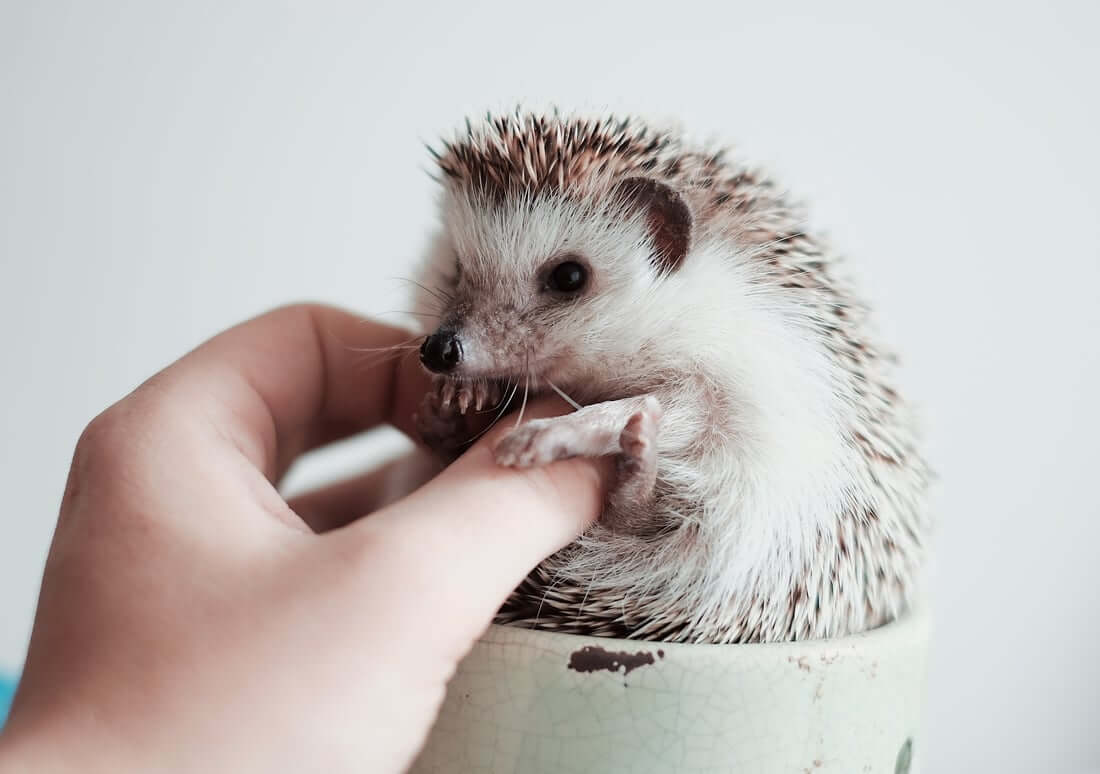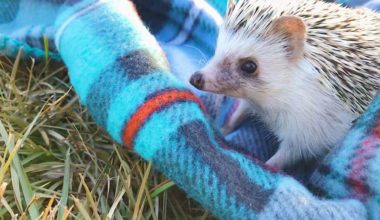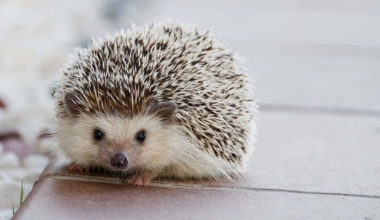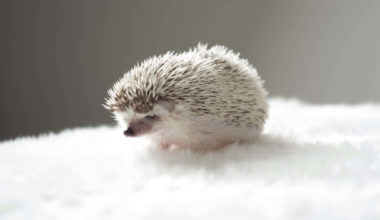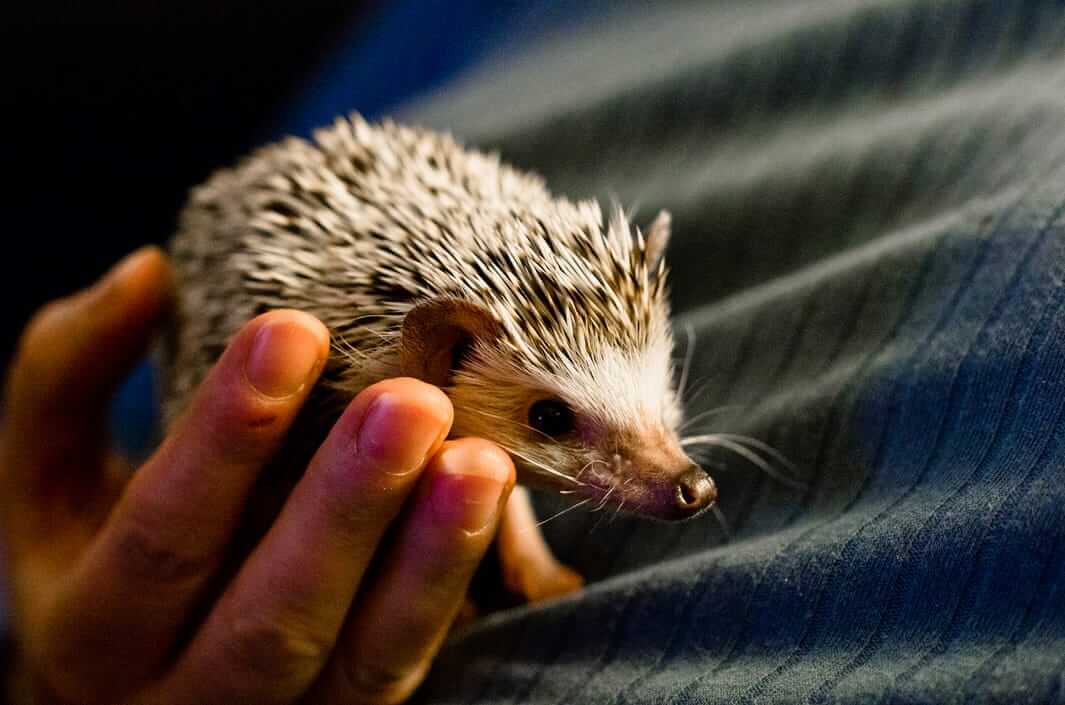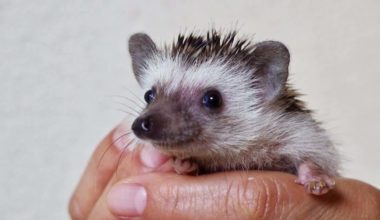Hedgehog quilling is something that many new owners don’t know much about before they get their pet for the first time.
Because of this, they get a little concerned when they notice their hedgehog losing its quills. In fact, many panic and assume something is wrong.
If you own a pet hedgehog then it’s up to you to educate yourself on the process of quilling. Understanding what it is, how long it takes, and what you can do for them are all crucial elements of good hedgie ownership.
Fortunately, this guide covers everything you need to know about hedgehog quilling so you can be prepared when it happens to your little buddy. Once you understand what’s happening it’s easy to take care of them and navigate the process.
What Is Hedgehog Quilling?
The name “hedgehog quilling” is a little bit deceptive because hedgehogs don’t technically have quills, they have spines. This is important to know in case we refer to “quills” as “spines” in the future.
Quilling is a process hedgehogs go through when they essentially exchange their old spines for new ones. This is part of the growing process because their baby quills simply won’t do the job for an adult body.
When this happens a significant number of their quills will start to fall out. In their place, larger quills will start to grow in.
So when do hedgehogs quill?
Hedgies will go through this process at least twice over the course of their lives. The first time will often be when they’re 4-6 weeks old. This is when a lot of the change and discomfort will happen because they’re replacing very small quills with much larger ones.
You’ll be able to check their backs and see the adult quills beginning to grow through. It can be rather startling at first when you see just how much bigger they are!
The second episode of hedgehog quilling tends to happen when they’re about 16 weeks of age. While this isn’t nearly as bad as the first time, it can still get quite uncomfortable.
It’s possible for your hedgehog to go through smaller instances of quilling later on in its life, but that’s less defined. The first two are the most predictable.
How Long Does It Last?
The process of hedgehog quilling can vary depending on a number of factors. Genetic components, age, and care level are the most common.
Unfortunately, there isn’t a firm answer we can give to this question. Some hedgehogs are done quilling in a couple of weeks while others can take over a month.
You can check their back (gently) to see if it looks like they still have a lot more to go. Often times you’ll be able to see new spines poking through and use that as a rough gauge.
Is It Uncomfortable?
Hedgehog quilling can definitely be quite uncomfortable. Imagine if you had to push large quills through tiny openings in your skin!
Some hedgehogs have it worse than others depending on the size and rigidity of their spines. This is entirely situational and can’t really be predicted or used in any way to make them more comfortable.
Sometimes a quill will not come out cleanly which will be a little more painful. Eventually, it should sort itself out but might take longer to grow in cleanly than all the others.
In some rare cases, a new spine might find itself unable to grow in cleanly for a significant period of time. This can lead to long-term discomfort and potentially bleeding. These situations typically need intervention to resolve.
Even the smoothest hedgehog quilling can still cause discomfort due to the nature of how these animals act. Hedgehogs like to be active and will naturally bump their quills into objects while they move.
Normally there’s nothing wrong with this. However, during the quilling process the wrong bump or rub can cause them a great deal of pain.
Because of this, you’ll likely notice a change in behavior while this is going on. There might be less activity and resistance to being handled and as a result, they might feel a little cooped or grumpy.
Their change in mood is something you’ll need to look out for. A lot of hedgehog bites happen when they’re quilling (more on this later).
How To Make Them Feel Better
There are a couple of different things you can do to make the hedgehog quilling experience a little more manageable for your pet.
The first is to give them a nice bath. Oatmeal baths are a favorite that many experienced owners tend to recommend. Use the sock method for maximum effectiveness.
You can also use Aveeno baby wash as well. This will help clean and soothe their quilling area without drying it out (which can actually make it worse).
- 33-fluid ounce bottle of gentle cleansing Aveeno baby wash and shampoo with natural oat extract
- The rich lathering wash & shampoo formula rinses clean & leaves behind a light, fresh fragrance
- The formula is tear-free, soap-free, hypoallergenic, paraben-free, and phthalate-free
- Rinses clean without drying
Using either of these with a nice warm bath is a great way to provide some relief to your poor hedgehog. Even if your hedgie is not normally a fan of baths you’ll likely see them settle in once they enter the water.
Some owners like to use a little bit of olive oil as well. By applying it directly to the skin it helps keep things soft and assist the process. This isn’t something you want to do excessively though, so if you want to try it apply in moderation.
Adjustments To Make When Handling Them
You want to be very conscious of comfort during the hedgehog quilling process, and that especially applies to handling.
Since your hedgehog will be feeling a bit sensitive all over, you’ll need to adjust the way you play with them during this time period. The same kind of snuggling and cuddles you did before they started quilling might not work anymore.
First off, always watch for signs that they’re unhappy. If you hold them in a certain way and they respond with a grumpy noise you should take note of that. If they nip at you when you touch them in a certain area make sure to avoid it until they’re fully healed.
It’s not a good idea to stop handling them entirely. Some new owners think that this is the most considerate thing they can do for their pets, but it’s ultimately a mistake. Early on is when you need to develop a bond for your sake and the comfort of your hedgehog.
Instead, continue handling them, but in a more passive way. Instead of touching them or stroking their back try letting them take charge. Let them walk on top of you or march around in your lap.
This will let them continue to build a level of comfort with you, but on their terms. They’ll be much happier with this and the chance of hitting a tender spot will be greatly reduced.
Once they’re finished quilling you can resume your normal handling methods that are a bit more active.
Make Sure It’s Not Something Else
There are other reasons why a loss of quills can occur. It’s usually part of the natural hedgehog quilling process, but you should always check to make sure nothing else is going on.
If quills aren’t being replaced by new ones that might indicate that something isn’t right. Also, any spines that don’t have a defined root can mean this as well.
The most common causes for a hedgehog losing quills are mites, poor diet, and stress. If you suspect that one of these is the cause for a loss of quills you should take your hedgehog to the vet.
They will be able to help you diagnose and understand the cause. Once you do this you can make whatever adjustments that need to be made.
Conclusion
Hedgehog quilling is a natural occurrence that all new owners need to understand. It’s a time in the life of your hedgehog where you’ll need to be extra aware of what they need and know how to keep them comfortable.
Now that you know about the process it should be pretty simple to navigate it. Plus, the more you understand the behavior of your hedgie the easier it will be!
It’s all about getting it out of your system so you know what to expect. After you’ve dealt with quilling once, handling it again in the future will be a piece of cake.
